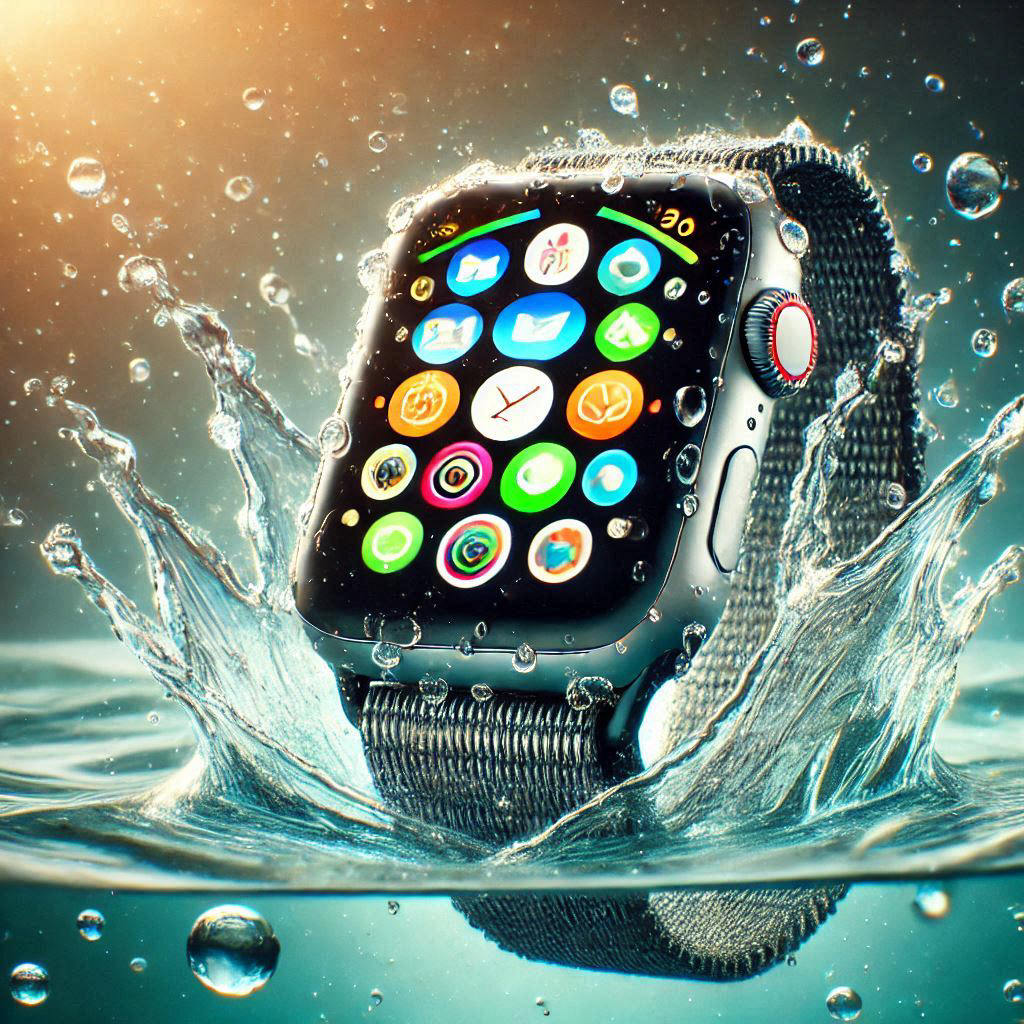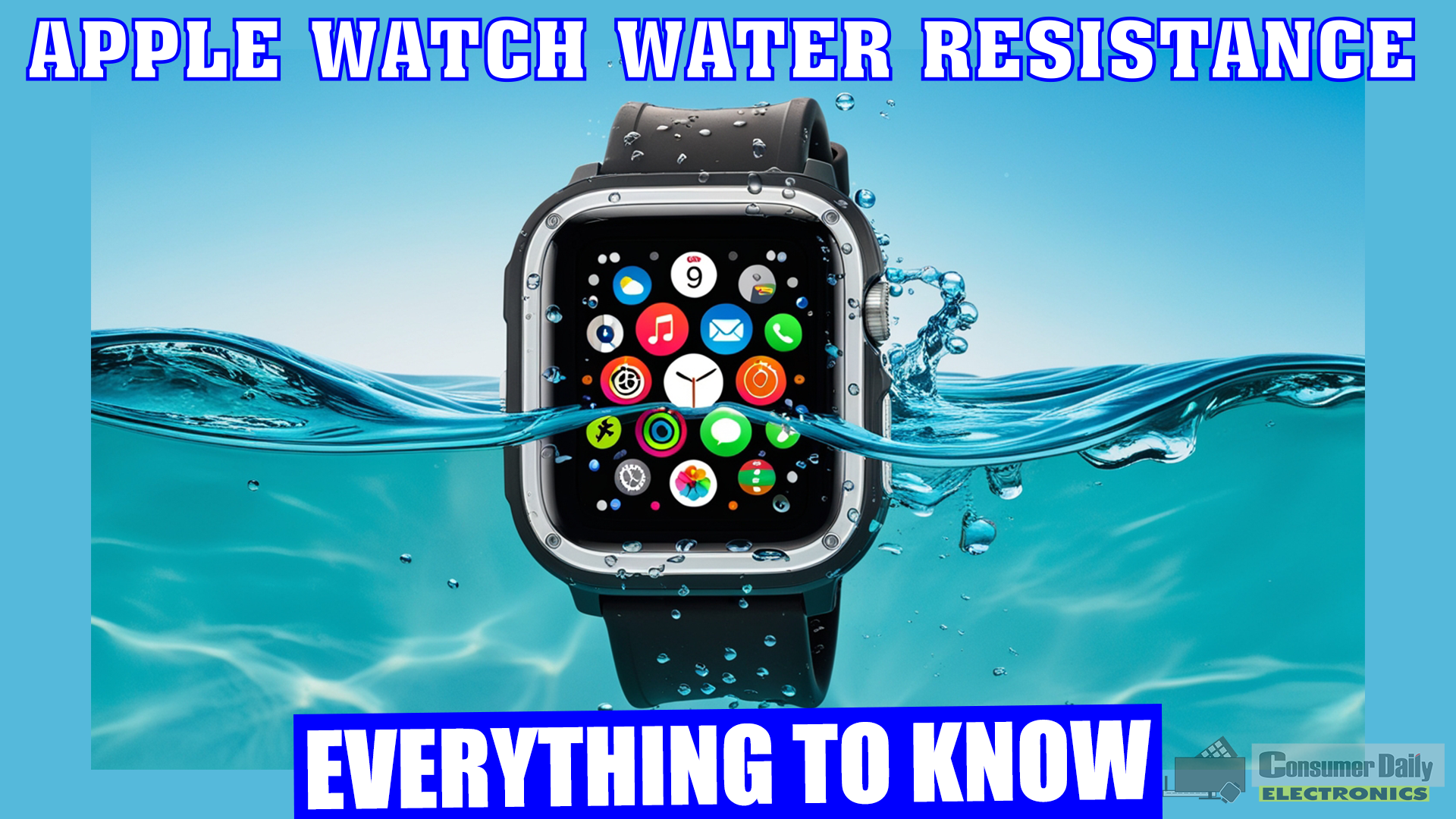Introduction
The Apple Watch is a versatile device that’s become a staple for fitness enthusiasts, tech lovers, and everyday users. One of its standout features is its water resistance, but how far can you push its limits? Whether you’re a swimmer, a beachgoer, or just someone caught in the rain, knowing the ins and outs of using your Apple Watch in the water is essential.
In this guide, we’ll dive into everything you need to know about Apple Watch’s water resistance, including its limits, proper usage, and tips for keeping it in excellent condition.
Understanding Apple Watch’s Water Resistance Ratings
Apple Watches come with water-resistance ratings that indicate how well they can withstand exposure to water. These ratings are based on industry standards such as Ingress Protection (IP) and ATM (atmospheres). You can find the ratings in the product page and decide whether you’ll be able to take your Apple Watch in the water.
- IP Ratings: This measures protection against dust and water. For example, IP68 means the device can survive immersion in water under specific conditions and it’s dustproof.
- ATM Ratings: This measures pressure resistance. An Apple Watch rated 50 meters water-resistant (5 ATM) can handle shallow swimming but not deep diving.
Note: Water resistance is not permanent. Over time, seals can wear down, reducing the watch’s ability to repel water.
Which Apple Watch Models are Water-Resistant?
When it the matter of water resistance comes in discussion, not all Apple Watches are equal. Here’s a breakdown by series:
- Apple Watch Series 2 and Later:
- Rated for water resistance up to 50 meters.
- Ideal for swimming, shallow snorkeling, and casual water activities.
- Apple Watch Ultra:
- Enhanced water resistance up to 100 meters.
- Designed for extreme water sports and even recreational diving.
- Apple Watch Series 1 and Original:
- Splash-resistant but not suitable for submersion.
When selecting an Apple Watch, match its capabilities to your water-related activities to avoid accidental damage. Not all Apple watches can be put in the water.
Apple’s Guidelines for Using Apple Watch in Water
Apple provides clear guidelines on what you should and shouldn’t do with your Apple Watch in the water. Here’s a quick summary:
- Recommended activities: Swimming in pools or the ocean (Series 2 and later), showering, washing hands, or light rain exposure. Apple Watch Ultra and later models can be used while scuba diving(up to 40 meters), water skiing or in a sauna(below 55°C).
- Activities to avoid: Scuba diving, water skiing, high-pressure jets, and sauna use(except Apple Watch Ultra and later). These can compromise the watch’s seals or expose it to extreme conditions.
Can You Swim with an Apple Watch?
Absolutely! Apple Watch Series 2 and later models are designed with swimming in mind. Features like the Workout app include swimming modes to track laps, distance, and calories burned.
Precautions for swimming:
- Avoid exposing the watch to chemicals like chlorine in pools for prolonged periods.
- Rinse the watch with freshwater after swimming in a pool or the ocean to remove salt and chemicals.
The Apple Watch Ultra takes swimming to the next level with its ability to track dives and withstand higher pressures.
Using the Apple Watch in Saltwater
While the Apple Watch is water-resistant, saltwater poses additional risks. The salt can corrode metal parts and degrade seals over time.
Tips for saltwater use:
- Rinse your Apple Watch thoroughly with freshwater immediately after exposure.
- Avoid prolonged exposure to saltwater whenever possible.
- Dry it completely to prevent residue buildup.

Showering with an Apple Watch: Is it Safe?
It might seem convenient to shower with your Apple Watch, but there are risks involved. While water alone won’t harm the device, substances like soap, shampoo, and conditioner can break down its seals. It may seem slow, but it will certainly harm your Apple Watch’s water resistance, according to Apple.
Best practices:
- Remove your watch before showering to extend its lifespan.
- If you must shower with it, rinse it with clean water afterward and avoid soapy or oily products.
Apple Watch and High-Pressure Water
Other than Apple Watch Ultra or later models, high-pressure water can force its way through seals, damaging the internal components. This includes activities like jet skiing, using a pressure washer, or even washing hands under a strong faucet.
To protect your watch, avoid exposing it to water streams with high velocity or pressure. Apple Watch’s water resistance feature is not perfect for high-pressure water exposure, except the Watch Ultra or later models. Those models have higher abilities of water resistance.
What Happens if Water Gets Inside Your Apple Watch?
Even with Apple Watch’s water resistance, accidents happen. If water enters your watch, you may notice fogging under the screen or unresponsive buttons.
What to do:
- Turn off the watch immediately.
- Place it in a dry, warm area or a bag of silica gel (avoid rice as it can leave dust).
- Contact Apple Support for professional assistance.
Water Lock Feature: What It Does and How to Use It
The Water Lock feature is a lifesaver for swimmers. It prevents accidental taps caused by water and expels trapped water from the speaker. This feature is your good companion if you frequently take your Apple Watch in the water.
How to use it:
- Swipe up to open the Control Center.
- Tap the Water Lock icon (it looks like a water droplet).
- After water exposure, turn the Digital Crown to release water from the speaker.
In Apple Watch Ultra or later, the Water Lock feature can be made to turn on automatically when exposed to water of 10cm depth or less. Make sure to enable this before taking your Apple Watch in the water.
How to Properly Dry Your Apple Watch
Drying your Apple Watch correctly is crucial to prevent long-term damage.
- Wipe it gently with a soft, lint-free cloth.
- Let it air-dry in a warm (but not hot) environment.
- Avoid using hairdryers or heaters, as high heat can damage internal components.
Preventing Long-Term Water Damage
Maintaining your Apple Watch’s water resistance over time requires care. Here are some tips:
- Do not expose the watch to harsh chemicals, such as perfumes and cleaning agents.
- Check for visible damage to the case or seals, as cracks can compromise water resistance.
- Test the Water Lock function regularly to ensure it’s working.
Third-Party Accessories for Water Activities
For those who frequently engage in water sports, investing in third-party accessories can add extra protection to your Apple Watch in the water:
- Waterproof cases: Provide an additional layer of water resistance.
- Durable straps: Silicone or sport bands are better suited for water activities than leather or metal.
AppleCare+ and Water Damage
AppleCare+ covers accidental damage, including water exposure, but terms apply. If your Apple Watch suffers water damage:
- Check your AppleCare+ coverage status.
- Contact Apple Support to file a claim.
- Be prepared to pay a service fee for replacement or repair.
Video Showing Apple Watch’s Water Resistance
Here’s quick video showing the water resistance of the Apple Watch. This is pretty old video, which clearly shows that there’s no problem in throwing your Apple Watch in the water.
Conclusion
The Apple Watch is a fantastic companion for water-related activities, but understanding its limits is key to ensuring its longevity. By following Apple’s recommendations and maintaining your watch properly, you can enjoy its features without worry.
FAQs
1. Can I wear my Apple Watch while swimming?
Yes, Series 2 and later are suitable for swimming in pools or the ocean.
2. What to do if I expose my Apple Watch to saltwater?
Rinse it thoroughly with freshwater and dry it immediately to prevent corrosion.
3. Is the Water Lock feature automatic?
Yes, in Apple Watch Ultra or later it’s possible to have the Water Lock feature automatically turned on before water exposure.
4. Can I go to the sauna with my Apple Watch?
No, other than Watch Ultra or later models, extreme heat and steam can damage the watch’s water-resistance seals.
5. Does AppleCare+ cover water damage?
Yes, but it’s considered accidental damage and may require a service fee.
Related: VA Vs IPS Monitor Panel: Which One Is Best For You in 2024?

